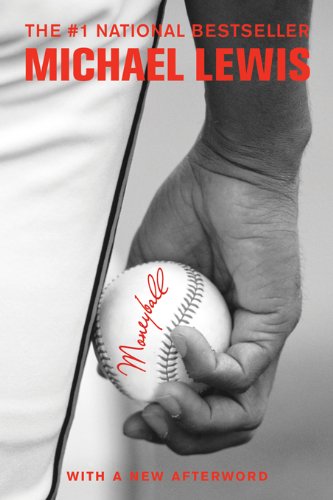

This article is an excerpt from the Shortform summary of "Moneyball" by Michael Lewis. Shortform has the world's best summaries of books you should be reading.
Like this article? Sign up for a free trial here .
What are baseball sabermetrics? Did the theory of sabermetrics work for the Oakland A’s when they implemented the strategy in Moneyball?
By the 2002 season, Oakland A’s General Manager Billy Beane adopted the idea of baseball sabermetrics. Sabermetrics helped the A’s redefine their team and season, and ultimately get to the playoffs. But baseball sabermetrics were not without controversy. Read about sabermetrics’ definition and Beane’s strategy for the A’s.
What Are Baseball Sabermetrics?
What is sabermetrics’ meaning? The sabermetrics definition starts with Bill James. Bill James had begun his writing career under quite humble circumstances. When he starts self-publishing in the late 1970s (it takes a few years for his work to be taken up by a professional publisher), he is already in his 30s, with no written works to his name. Working the night shift in a pork and beans factory in a tiny town in Kansas, he is an unlikely figure to ultimately revolutionize America’s national pastime.
Nevertheless, he has keen insights about baseball (the only topic about which he ever cared to write) and is driven to put them on paper. He begins analyzing baseball statistics: specifically, the deficiencies of existing baseball statistics, and how these deficiencies lead major league teams to make poor and shortsighted personnel decisions. In 1977, he self-publishes his first work, barely longer than a pamphlet. He doesn’t know it at the time, but James is launching a new field of intellectually rigorous and data-driven baseball analysis, which will come to be known as baseball sabermetrics (so named after SABR, the acronym of the Society for American Baseball Research).
James wants to see exactly which plays most contribute to a team’s offensive production. He sets out to construct a model to predict how many runs a team might expect to score, based on their accumulated walks, singles, doubles, stolen bases, and other offense-generating plays. He pores over statistics from previous baseball seasons to see which components of offense are most correlated with runs. This allows him to assign a statistical “weight” to each, in effect determining how many runs (or portions of a run) a walk, hit, or stolen base is worth. Here is the sabermetrics meaning:
He distills it down to a “Runs Created” formula:
Runs Created = (Hits + Walks) x Total Bases/(At Bats + Walks)
After statistical analysis, James finds that this formula is remarkably effective in predicting a team’s run production. It shows that walks are a valuable (yet overlooked) part of offense, while batting average matters hardly at all.
A New Focus on Sabermetrics for the Oakland Athletics
In 1997, Billy Beane becomes GM of the Oakland A’s. He is determined to use baseball sabermetrics to build a successful team with very little money, and to do so, must look for underpriced players. By 2002, he assembles a sabermetric-focused team in the front office, most notably his Assistant GM Paul DePodesta, who had graduated from Harvard with a degree in economics and has never played professional baseball. Billy is a micromanaging GM, deferring very little in the way of trades, drafting decisions, or even on-field tactical decisions to his scouting staff or even the manager.
Going into the 2002 draft, Billy’s mandate is to acquire effective players on the cheap—and the draft is the best way to do this. When a team drafts a player, they acquire the exclusive rights to sign him, after which they have exclusive rights to his first seven years in the minor leagues and six in the majors. This gives the drafting team enormous leverage in the contract negotiation process, enabling savvy drafters to get good players for a fraction of what they would cost on the free agent market.
Billy has been burned in previous drafts by his scouting staff’s insistence on drafting high school players over college players, despite the objectively better performance history of the latter group. Based on his own experiences as a high school draftee, Paul DePodesta’s statistical analysis, and his insights from reading Bill James, Billy Beane establishes a new rule for his club going into the 2002 draft: no high school players.
Billy and Paul create a shortlist of 20 players they wish to select, many of them overlooked and undervalued, but nevertheless, extremely talented college players with a talent for getting on base. But getting most of them, or even some, is difficult. Whether or not they are still available depends on what the other teams do. The picks any team ends up with depends on a combination of prioritization, strategy, and pure luck.
At the top of Billy’s shortlist are two amateur players—fielder Nick Swisher and catcher Jeremy Brown. Swisher is one of the relatively few players about whom both the traditional scouts and the baseball sabermetric-focused newcomers are in agreement: the young player is a surefire MLB star.
Brown, on the other hand, is a highly unconventional pick. Most of the scouting on Brown assigns him a very low place in the draft, if, indeed, he is to be drafted at all. Although he has what appear to be great stats coming out of college, most of the scouting world (including the A’s own staff) has dismissed him as being too heavy to make it as a major league baseball player.
As the draft unfolds, Billy and his staff can’t believe their good fortune. As the rest of the league makes shortsighted draft choices (including many high school players), more and more of the A’s targeted players are available. The team snags 13 of the 20 players they had targeted, including Jeremy Brown (typically, getting three or four is considered a success).
Billy Beane and Paul DePodesta profit from the irrationality of their competitors, who overvalue athletic attributes like speed and strength which aren’t necessarily effective at winning baseball games. The A’s, instead, select players using a process of rational, scientific, data-based analysis, which is better at predicting their likelihood of succeeding in the major leagues.
Did Baseball Sabermetrics Work for the A’s?
The team’s success is a testament to their value investment strategy in building the team and a stunning rebuke to decades of conventional wisdom about what makes a winning ballclub. Still, many baseball traditionalists, particularly former player-turned-TV-commentator Joe Morgan, appear to be actively rooting against the A’s in the playoffs. They seem to not so much disagree with Billy’s ideas about how to win baseball games as to be outright offended by them. Winning games without flashy home run sluggers or lighting-speed pitchers, to these keepers of baseball’s conventional wisdom, is a violation of the natural order of things, a perversion of the noble tradition and spirit of America’s national pastime. Morgan is part of an insider’s club of pundits, writers, scouts, and ex-players, which never seems to face accountability for its failures. They are a social club that values loyalty over competence.
Unfortunately, the A’s fall in the first round of the playoffs, losing three games to two in a best-of-five divisional series to the Minnesota Twins. Although the naysayers hold this up as proof that baseball sabermetrics and on-base percentage are not what makes a successful baseball team, DePodesta attributes the playoff failure to the small sample sizes of the playoffs, in which random on-field events have an outsized impact on the outcome of a series. He notes that during the regular season, the A’s allowed an average of only 4 runs per game, but that they allowed 5.4 during the series against the Twins, largely due to two bad games by pitcher Tim Hudson.
The idea of baseball sabermetrics came to redefine the economics of baseball. Many teams adopted some form of baseball sabermetrics—including the Boston Red Sox, who went on the win the World Series in 2004.

———End of Preview———
Like what you just read? Read the rest of the world's best summary of Michael Lewis's "Moneyball" at Shortform .
Here's what you'll find in our full Moneyball summary :
- How Billy Beane first flamed out as a baseball player before becoming a general manager
- The unconventional methods the Athletics used to recruit undervalued players
- How Sabermetrics influences American baseball today






